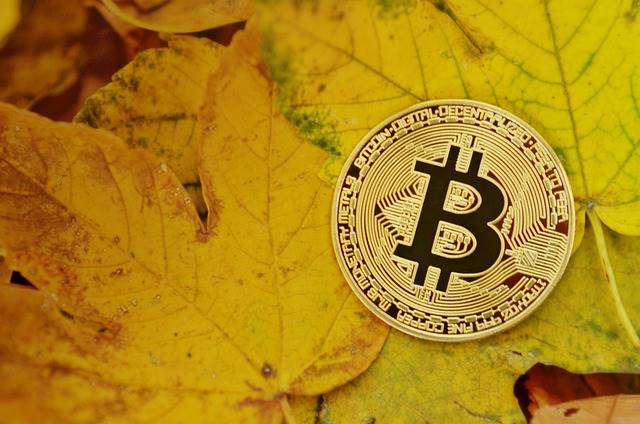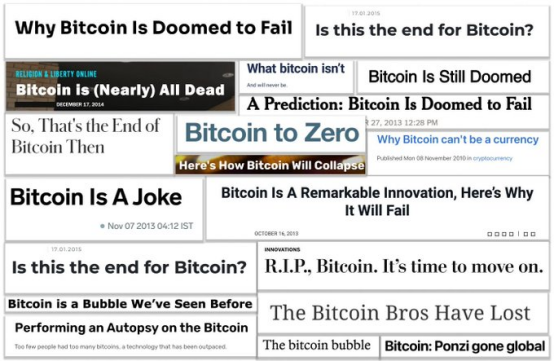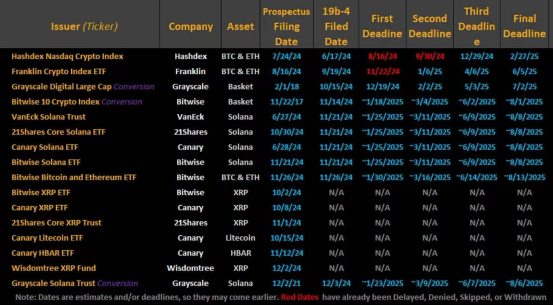撰文:陀螺财经

比特币,终于突破了 10 万美元。
在经历了 2 周的回调震荡后,比特币今日重回巅峰,一鼓作气从 9.8 万上涨突破 10 万美元,正式开启了 6 位数的新征程。截至发稿时,比特币现报 102649 美元,日内上涨超 6.29%。以太坊也不甘示弱,成功站上 3900 美元,现报 3917.42 美元,日内上涨 5.77%。
心理关口突破,市场波动也在加剧。根据 Coinglass 数据,截至发稿时,24 小时内 213167 人被爆仓 ,爆仓总金额为 6.7743 亿,多单爆仓 3.69 亿美元,空单爆仓 3.08 亿美元。
从消息面而言,新任 SEC 主席的提名释放了更多的利好情绪。据金十报道,美国共和党当选总统唐纳德·特朗普周三表示,已正式提名 Paul Atkins 担任美国证交会(SEC)主席。
相比于此前的铁血掌门根斯勒,Atkins 对于加密的态度友好得不止一星半点。从其履历来看,Paul Atkins 毕业于沃福德学院,毕业后加入纽约市 Davis Polk & Wardwell 律师事务所,后于 1990 年正式加入 SEC,并以反对「对违反证券法的公司处以高额罚款」而闻名。
在任期间,Atkins 致力于在推动创新与强化投资者保护间寻求平衡,协助 SEC 主席制定了多项关键法规。在数字资产方向,自 2017 年以来,他还在拥护数字资产和区块链行业的行业协会 Token Alliance 中担任联合主席一职。Atkins 也曾多次力挺加密行业,称 SEC 的执法行为抑制了美国加密行业的发展,并呼吁减少对加密货币的监管。更关键的是,Paul Atkins 还是 RSR 代币的官方顾问。
可以看出,该任主席在法规建设方面经验十足,且本身就有代币加持,对于数字资产也呈现出非常积极的态度,可为数字资产构建更为明确包容的监管框架。在任命发文中,特朗普也对其赞誉良多,表示「Paul Atkins 坚信稳健、创新的资本市场能够满足投资者的需求,并提供资金使我们的经济成为世界最好。他还认识到,数字资产和其他创新对于使美国变得强大至关重要。」
就在昨日,围绕 Paul Atkins 能否任命 SEC 主席的消息,市场还曾掀起了一番乌龙,代币抢跑、假消息齐发,比特币也随之坐了一趟过山车。当然,目前 Paul Atkins 仅仅是被提名,后续还需经过参议会确认,而其本人的意愿,也会决定这一宝贵的监管席位花落谁家。
相比于谁是 SEC 主席,对于市场而言,更重要的是肉眼可见加密新纪元的来临,是特朗普所承诺的监管框架的初显,无论从情绪面还是事实面,这都是一次关键提振。
回到比特币本身,从 2010 年 Laszlo Hanyecz 花费 10000 枚比特币买披萨,让比特币有了现实的价格尺度开始,到如今比特币突破 6 位数,已经过了 16 年。
随着这一片如今堪称天价的披萨泯于尘土,曾经被主流界嘲笑戏耍的「庞氏骗局」,又或是被客观称之为「金融实验」的比特币,也跻身成了 16 年间最成功的投资产品,创造了难以想象的增长奇迹。按照比特币披萨的价格,BTC 已然上涨了 4000 万倍,仅以今年论,BTC 涨幅也达到了 135%。从目前来看,所有流通中的比特币价值达 2 万亿美元,超过万事达卡、沃尔玛和摩根大通的总价值,在 Companies marketcap 的全球资产排名榜单上,比特币市值已然超过白银,位列全球资产市值第 7 名。

这一场社会试验无疑是成功的,或许谈到超越主权货币为时尚早,但这无疑是去中心化货币自下而上的全面胜利,是由极客与草根组成的参与者们的共同胜利。在不长不短的 16 年间,比特币从洗钱、诈骗的污名化中逐渐抽离,从数字黄金逐步向超主权货币进发,作为加密世界的中心衍生出更自主、更快速、更透明的全新金融体系,Web3 也承载着传统金融基础设施的转型之路快速演化。
若仅从资产角度来看,1 万美元的比特币和 10 万美元的比特币,隐含的意味已然大不相同。1 万美元的比特币可以被认为是小圈子自嗨的产物,是梦想家们的幻想,但当 10 万美元的比特币出现,主流世界已不可避免的把视野聚焦于此,而一个数字资产的新纪元,也正缓缓拉开序幕。
好的资产总是越跌越买,但在比特币上,越涨越买才是主旋律,价格才会让其真正被认可为好资产。比特币突破 1 万美元,吸引了灰度的入场;比特币突破 5 万美元,MicroStrategy 闻风而至;当比特币突破 6 万美元时,贝莱德、富达、富兰克林等全球机构开始跑步入场;当比特币超越 10 万美元,超主权货币性质凸显,国家储备或许会成为现实。
就在昨日,普京在莫斯科举行的投资论坛上发表讲话,主张将 BTC 作为全球储备资产,而非美元,核心原因是「没有人能禁止 BTC」。
可以预见,比特币的下一步,上市公司购买、传统机构入局、国家储备建立将会是关键词,用户普及会是比特币的必然之路。
以数字来看,加密市场的用户还少的惊人,根据 a16z 的估计,当前全球每月活跃加密货币用户约为 3000 万到 6000 万,但就是这几千万的加密用户,缔造了 3 万亿的加密帝国,若是叠加上全球 54 亿互联网人口,背后潜力不言而喻。
从国家储备来看,现如今,鉴于对主权货币的保护与金融安全考虑,绝大多数主流地区都对加密货币有着严格的限制购买条件,仅饱受通胀之苦的第三世界国家将比特币视为了货币的替代方案。若美国将其列入国家储备,当 100 万枚比特币进入国会,国际对于比特币的想象力或许才真正得以释放。
截至目前,比特币距离黄金 15 万亿美元的市值还有 7 倍有余,但 16 年间的增长奇迹,让这一成长目标变得近在咫尺。10 万美元,或许真的只是一个开始。
就连美联储主席 Jerome Powell 也于日前表示,比特币并非美元的竞争对手,而是黄金的竞争对手,且目前尚未被广泛用作支付方式,价格波动性较大,个人仅仅是由于身份原因而不被允许持有。
从发展路径来看,比特币的一小步,加密迎来的却是一大步。主流化绝不仅仅只是比特币的符号象征,受此影响,曾经在阴暗中躲藏的加密货币参与者可以昂首挺胸的以价值投资者的姿态来到台前。山寨币,也成功开辟了新道路。
就目前而言,共有 16 支新的加密 ETF 已正式向 SEC 提交申请,其中 Grayscale、Bitwise 推出了一揽子的加密货币指数,而以 VanEck、21shares、Canary、Wisdomtree 为首的机构们则瞄准了山寨币 ETF,Solana、XRP、Litecoin、HBAR 正式成为了 ETF 的参与者。在即将到来的 1 月 25 日,众多 ETF 就将迎来第一次集中的审核期。

无论是否被通过,但拜或许即将上任的 SEC 主席与机构站台所赐,等待了将近 3 年的山寨季,终于在不断证伪中来到。
从市场表现来看,一反炒新不炒旧的币圈准则,本轮牛市的炒家们终于开始念旧。随着以太坊成功突破 3800 美元,SOL、BNB 接连创下新高,波场更是打破了自 2018 年 1 月以来长达七年的纪录,一日暴涨 69%。
此前被福布斯列举的大市值僵尸币也突然焕发新生。XRP 从 11 月 5 日的 0.5 美元上涨至 2.7 美元,最高触及 2.8 美元,月内狂飙 500%,近 7 日上涨 53.70%。ALGO、XLM30 日内飙升 4 倍,就连沉寂已久的 ADA 与 EOS,在 30 天内也上涨超 200%。
币价上涨把市场的情绪协奏曲推到了高潮,加密资产的主流化进程提速,价值认可开始增长。而这一切,正是基于比特币实现的。
不得不承认的是,比特币也有做不到的部分。
尽管诞生于货币危机中的比特币已开始被部分国家视为主权货币,但离真正实现价格尺度与流通手段的货币,还相去甚远。而数字黄金这一称号,也让比特币更多的成为了一种抗通胀的投资品,而非币值稳定的交易货币。
加密世界的去中心化价值观也难免受到冲击,主流化带来的副作用——加密资产的美元化趋势不断显现。比比特币论,美国 11 支比特币现货 ETF 的总资产净值为 1082.3 亿美元,占比特币市值的 5.54%。而从国家论,美国拥有超过 21 万枚比特币,是全球最大的比特币持有者之一。
在此背景下,美国在加密领域的决定性作用无人能替代,华尔街机构也成功取代散户成为价值的承载者与接管者,核心资产离普通人越来越远,也成为了必然的趋势。
但幸运的是,私欲之花结出的公共之果,还在不断扩散。以加密货币为代表的想象力经济依然狂飙,年轻人以小博大翻身改命的机会也还未消散,自由的希冀裹挟着暴富美梦,在分工细化、阶级固化的当今社会闪闪发光,吸引着众多 Z 时代新人的到来。
所有这一切的缔造者,正是千千万万个加密从业者。今日,有不少从业者晒出了曾经花费「巨资」购买的商品,245 个 BTC 的电脑、67 个 BTC 买的耳机、30 个 BTC 买的汉堡,在「史上最贵」的戏谑中,大家也都心知肚明,若没有这些从业者的筚路蓝缕,加密世界,或许无法坚持到如今。
加密资产的新天,很快就会到来,而在这场加密全民的胜利中,每个参与者,都应该为自己的坚持收到时间的馈赠。
免责声明:本文章仅代表作者个人观点,不代表本平台的立场和观点。本文章仅供信息分享,不构成对任何人的任何投资建议。用户与作者之间的任何争议,与本平台无关。如网页中刊载的文章或图片涉及侵权,请提供相关的权利证明和身份证明发送邮件到support@aicoin.com,本平台相关工作人员将会进行核查。




